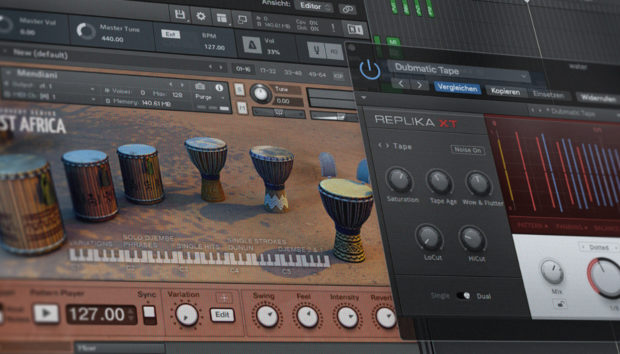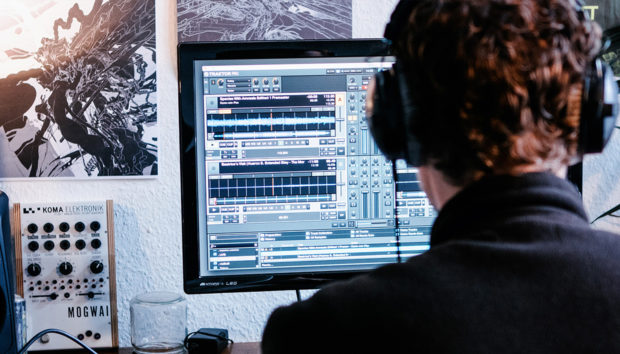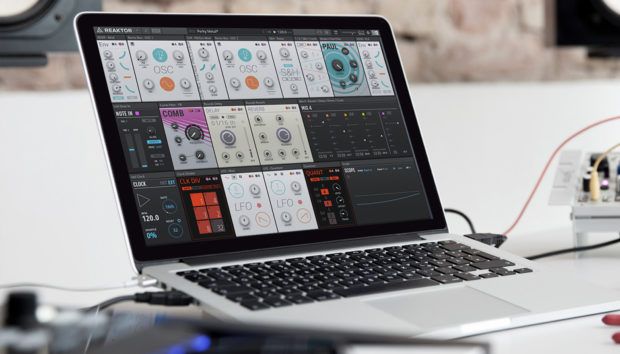WELKER’s Dancing Around EP marks a confident debut on CamelPhat’s When Stars Align label – a confident debut that wastes no time showcasing its range.
Across three distinct tracks, the Brazilian-born, LA-based producer leans hard into his roots, pulling live percussion, indie dance synth work, and gritty club energy into a release that feels equally suited for headphones and headline sets. Each track has its own momentum, but it’s the through-line of rhythm and detail that makes this EP land.
He’s constantly layering chopped vocals over warped basslines or building full drum ensembles out of carefully processed one-shots, and WELKER shows he’s got a clear grip on transient balance, mix control, and the arrangement instincts to match.
In this interview, he breaks down exactly how that happens in his sessions and why Transient Master is the GOAT for making his drums pop.
Jump to these sections:
- How he EQs and edits real percussion before reaching for Transient Master
- Where groove comes from when working with Brazilian rhythmic ideas
- Why transient shaping can clean up a sample or help it stand out
- What newer producers tend to overdo when shaping percussive hits
- A full breakdown of his mid/side transient technique for stereo imaging
These answers come straight from the project files. Let’s get into it.
When you’re layering real percussion, what’s usually the first thing that needs cleaning up?
The first step when working with real percussion is to use an equalizer and clean up the low and sub-low frequencies.

I typically apply a high-pass filter to everything below 100 Hz, except for elements like toms or snares, where the cutoff might vary around 80 Hz. Additionally, when many percussion elements are playing together in the same mid-frequency range, a “muddy” sound can occur, leading to frequency masking.
In these cases, I use equalization to sculpt these mid-frequencies and ensure each element has its own space in the mix.
Pro tip from WELKER: Control the sustain – reducing sustain can help clean up muddy mixes by controlling excessive reverb and dynamics in layered percussion.
Do you usually cut and edit quite a bit before applying transient shaping, or is the focus more on capturing the feel and then tweaking it?
My initial approach is always to focus on creating a consistent groove and capturing the overall feel of the music. In my production process, this is the main pillar – having a solid foundation, defining the rhythmic base, and making the necessary cuts and edits.
Once that’s done, only then do I move on to refining the sample using compression, saturation, and transient shaping.
Pro tip from WELKER: Identify the need – listen carefully to determine which elements actually need transient adjustments before applying any processing.
Do you use Transient Master early in the process to help sculpt the groove or later to give it that final tightness?
The use of Transient Master varies depending on the desired goal.
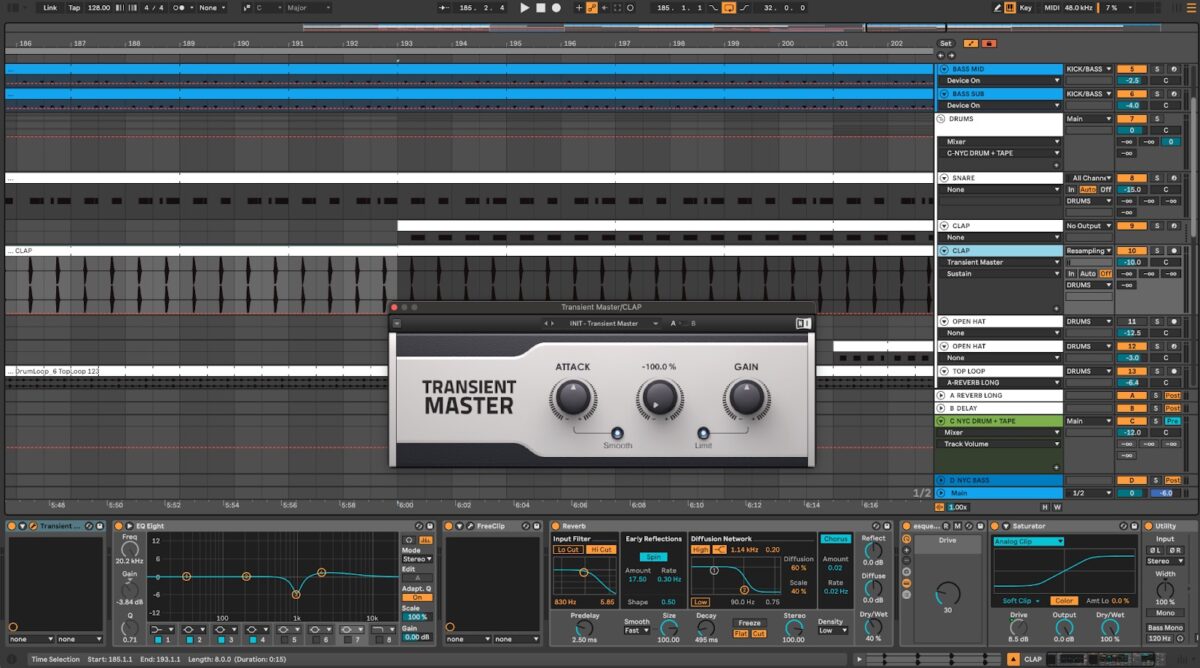
If I’m dealing with a pre-processed sample with too much reverb, I place it early in the chain to control or eliminate that excess by reducing the sustain.
On the other hand, during the final mixing stage, if I need a clap/snare to stand out more in the mix because I feel it’s “hidden,” I use Transient Master at the end of the process. The same applies to the kick drum; if I’m missing impact and want to bring more punch to it, I add a Transient Master to increase the Attack.
Pro tip from WELKER: Highlight the attack – use transient shaping to bring out the punch on critical elements like claps and kicks that need to cut through the mix.
When you work with things like Brazilian percussion, how do you maintain that loose and human feel without letting the transients get out of control?
I use Ableton Live 12 for production, so I create my drums using MIDI channels and one-shot samples. To maintain a loose and human feel, I apply swing/groove from Ableton’s Groove Pool, which adds a natural and less robotic bounce.
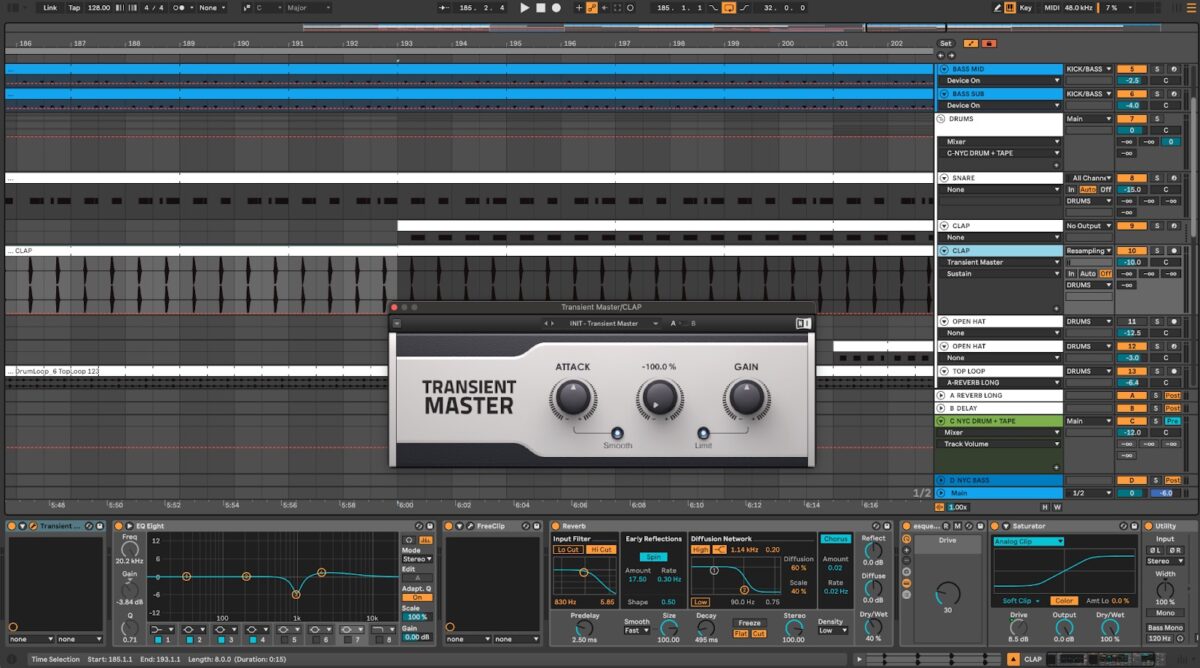
Additionally, I make subtle variations in the velocity of the notes and move some slightly off the grid to create organic imperfections. When I use my MIDI keyboard to record, I avoid quantizing to preserve the human touch, unless something is clearly out of time.
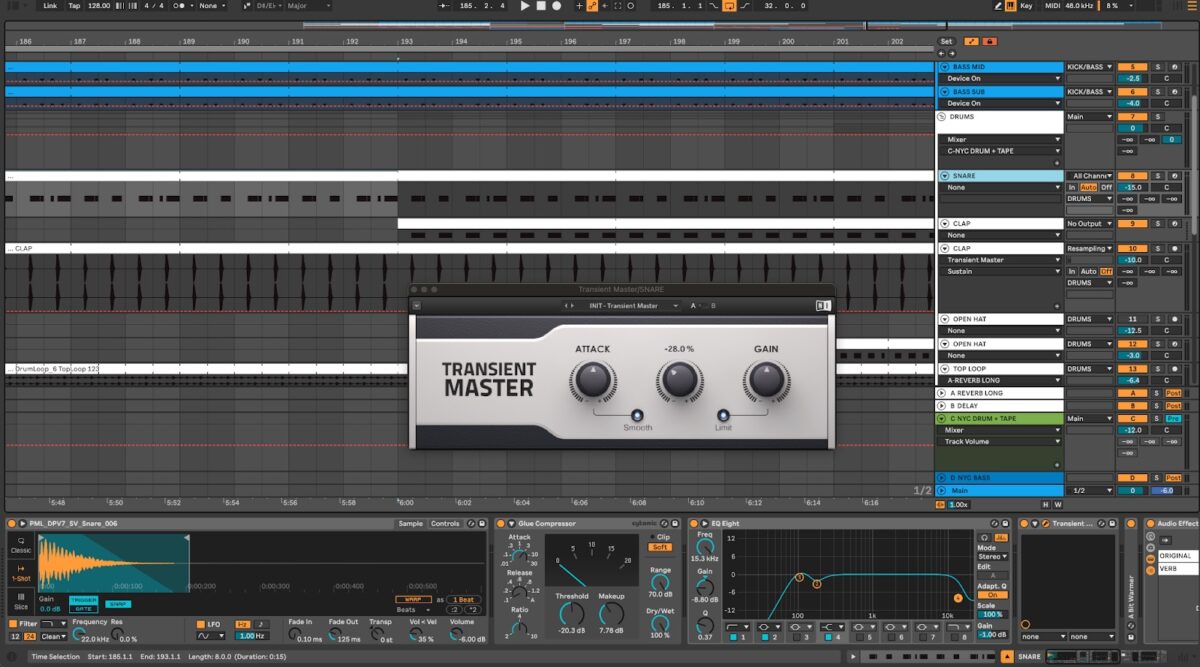
In some tracks, I also creatively use snippets of top loops to create complements and small dynamic fills for my drums; I never use an entire top loop without any editing. I feel that this way I can add my own touch and make it more my own.
Pro tip from WELKER: Adjust subtly – small changes to timing and velocity can preserve groove and feel without compromising clarity or consistency.
Do you typically EQ and compress before using Transient Master, or do you do the opposite?
Generally, I apply equalization and compression before the Transient Master.
Compression already helps to bring more definition to the transients, so I use Transient Master afterward only to sculpt the sound further and add a final touch.
However, if I want to dry out excessive reverb on a sample, as I mentioned earlier, I place the Transient Master as the first plugin in the processing chain, because in this specific case, I’m using it to clean up the sound, not to bring out prominence.
Pro tip from WELKER: Creating contrast – not all elements need sharper transients. Soften some to push them back in the mix and make space for others to stand out.
What do you think newer producers often overlook when it comes to transient shaping?
I think one mistake newer producers make is not giving importance to the transients in their tracks, perhaps due to a lack of knowledge, which can make the track sound a bit lifeless and muffled.
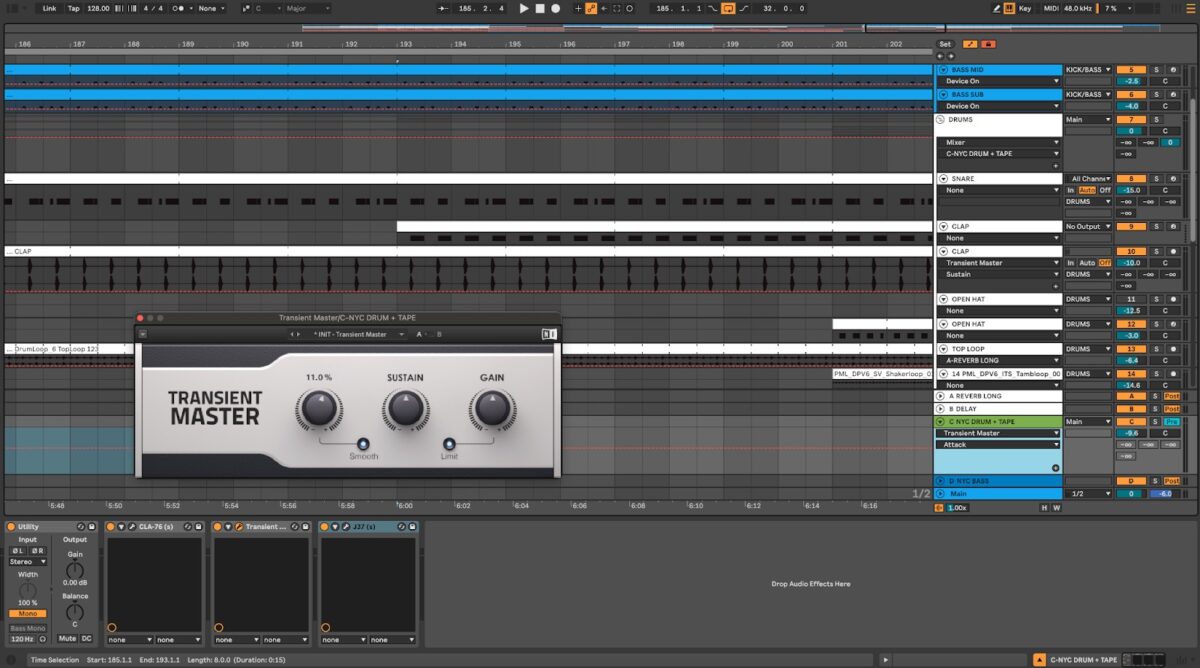
The opposite also happens; when I discovered transient shaping, I started adding transients to every element of my music, when in reality, that’s not the way to go.
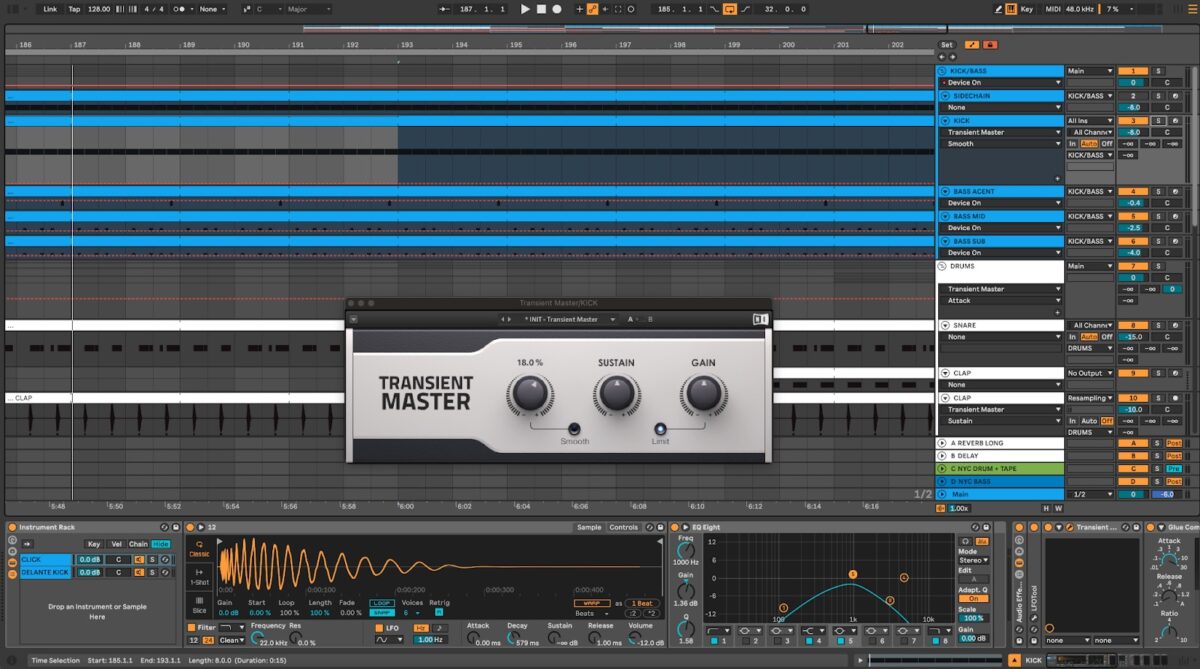
Not all elements need to have very pronounced transients. So, a common mistake when we discover transient shaping is to end up exaggerating and adding it to everything. In fact, it’s important to know when to increase and when to decrease transients, creating contrast with those that should stand out in the mix.
Pro tip from WELKER: Mid/side separation – split your drum group and apply Transient Master differently to mid and side channels to enhance space and depth without overprocessing.
Wrapping it all up
WELKER’s ear for rhythmic clarity and dynamic flow is all over the Dancing Around EP – and the way he uses tools like Transient Master shows how much nuance goes into making those grooves land.
For producers looking to clean up their percussion or give key elements more punch, this interview is packed with real-world advice that skips the theory and gets straight to what works.
The Dancing Around EP is out now on When Stars Align.
You can stream the full release and hear how these techniques show up in real tracks – especially the Carnival-inspired closer “Batucada.”
